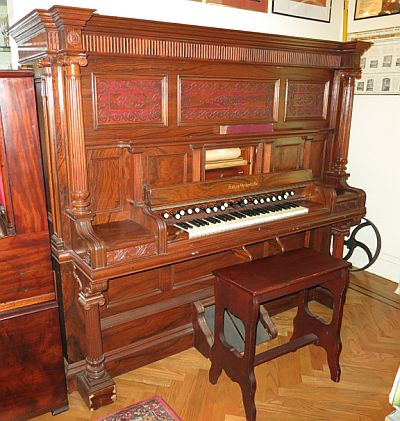

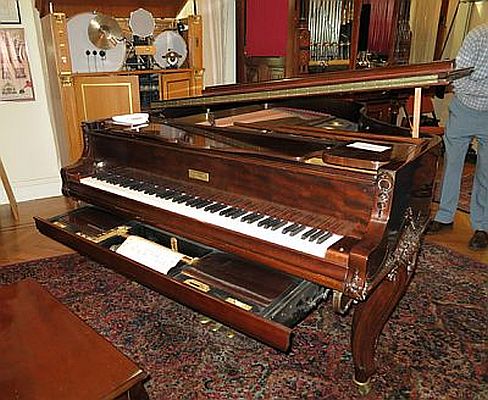
* GadgetBuilder.com * © 2008-2012 John Moran
Last Modified:
The June 9, 2013 meeting was at Bill Edgerton's shop in Norwalk. This was a unique event for CTHSM, likely one of the most unusual and enjoyable meetings we'll ever have. Bill and Ann Edgerton have collected and restored mechanical musical instruments for over 40 years, and they have four carousel organs plus a couple of dozen other old or antique music makers in one big room. Most of these music machines were made between 1850 and 1930, so we heard music from that era; surprisingly, many of the tunes were familiar. Most of the larger machines have air pumps, now driven by electric motors. Most of the music was played from folded, punched paper although some was by pins embedded in rolls. The largest music machine demonstrated weighs over a ton, the smallest weighs a few ounces.



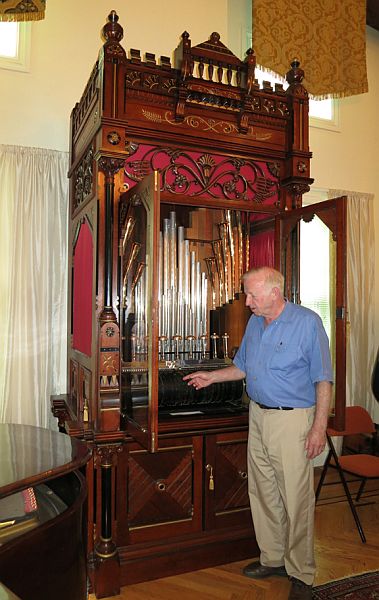
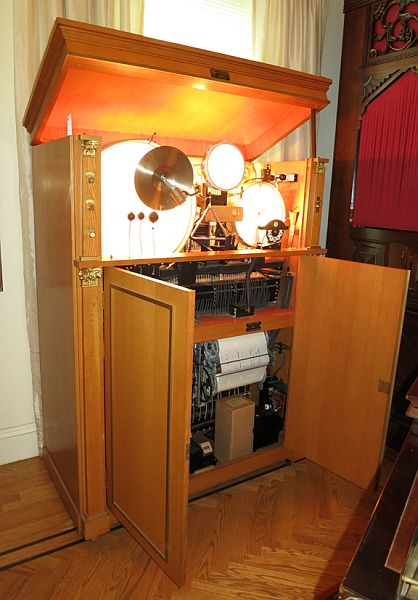
At left Bill is explaining the operation of this weight driven music machine. This machine uses a crank on the side to raise a several hundred pound weight which drives the works. Air is pumped by cams that drive bellows supplying a continuous supply of air. The music is held on a "log" made of wood with thousands of brass pins embedded; these pins activate the mechanism as the log rotates. A log contains 8 tunes.
At right is a Seeburg Nickelodeon replica, the last of 60 which Bill produced. Seeburg produced these about 1930 - they were the predecessor to the Jukebox. This Nickelodeon is driven by an electric motor as was the original. Music is played from a paper roll. The upper instruments visible are drums, symbal, and triangle. Other instruments, including a xylophone, are located in the lower section. Fidelity is good because you hear actual instruments, no electronics or speakers involved.

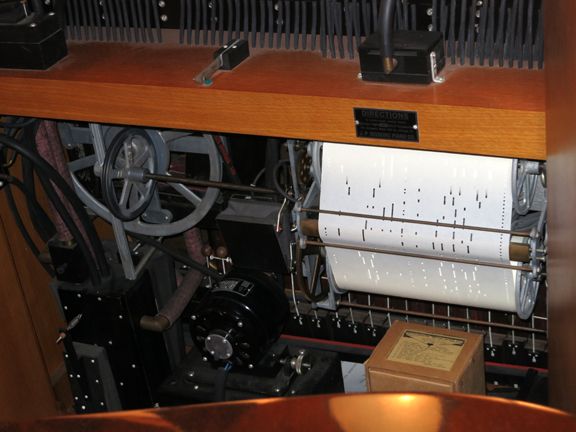 At left is the upper part of the Nickelodeon showing several of its instruments including drums, triangle, and symbal. These are real instruments that the machine plays, as directed by the paper roll in the bottom section, seen at right. Each roll has several tunes so you can put your nickel in and choose the tune you'd like from those on that roll.
At left is the upper part of the Nickelodeon showing several of its instruments including drums, triangle, and symbal. These are real instruments that the machine plays, as directed by the paper roll in the bottom section, seen at right. Each roll has several tunes so you can put your nickel in and choose the tune you'd like from those on that roll.
The three music boxes below are hand cranked to play. The one at right has music on a thin steel disk which can be changed, unlike the earlier versions which didn't allow changing the music they produced.
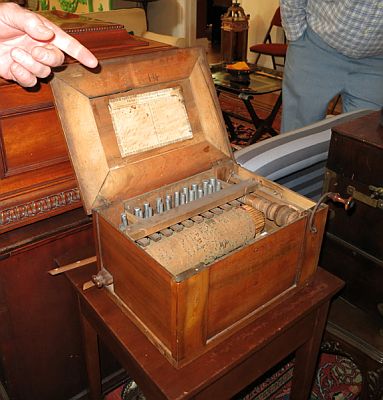
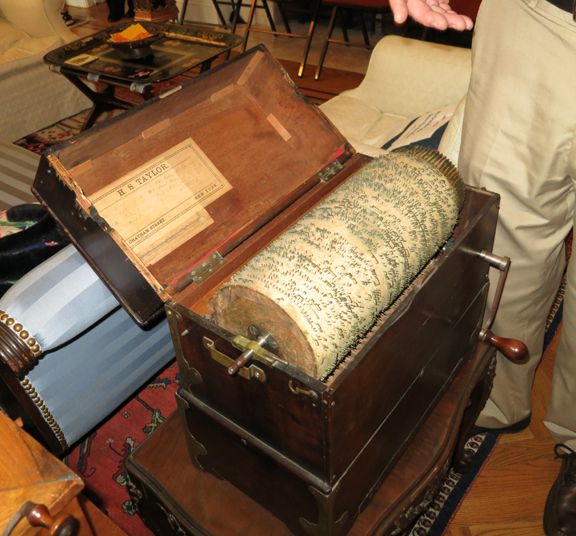
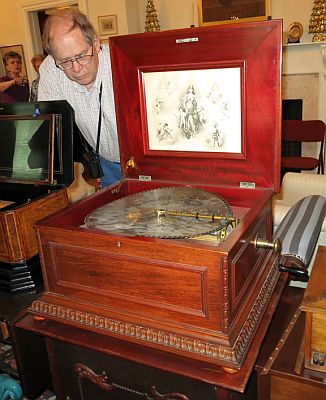
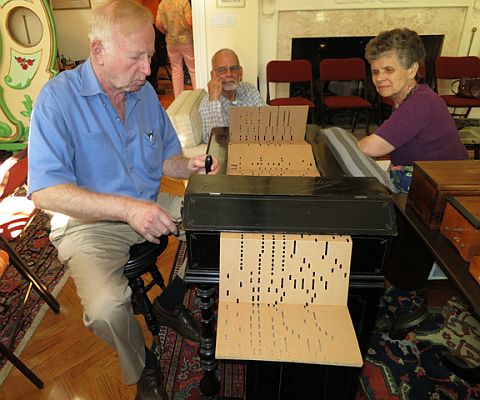 This hand cranked Italian Piano plays all of its notes repeatedly EXCEPT the notes where holes appear in the paper. Thus, it produces a lot of sound all the while it is playing.
This hand cranked Italian Piano plays all of its notes repeatedly EXCEPT the notes where holes appear in the paper. Thus, it produces a lot of sound all the while it is playing.
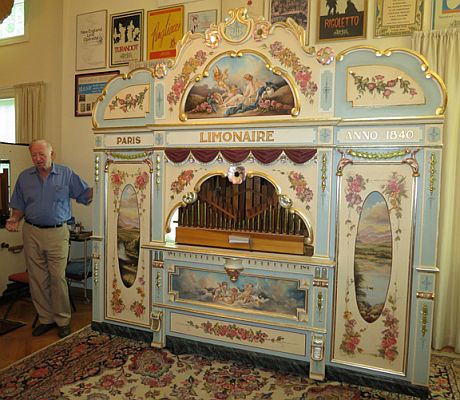
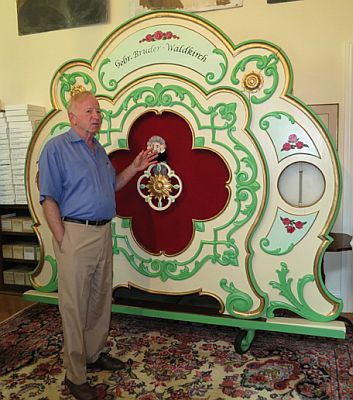
The organ pipes are visible on the left machine so they are arranged in order by size. The machine on the right has its pipes arranged for convenience of manufacture (i.e. to reduce cost) so they are not arranged by size. This setup is less pleasing to the eye so the pipes are hidden behind the facade.

This organ was meant to be used in an amusement park or with a merry-go-round to attract people by the sound. The figures, which are about 2 feet tall, move with the music, activated by air and controlled by the same paper that plays the music.
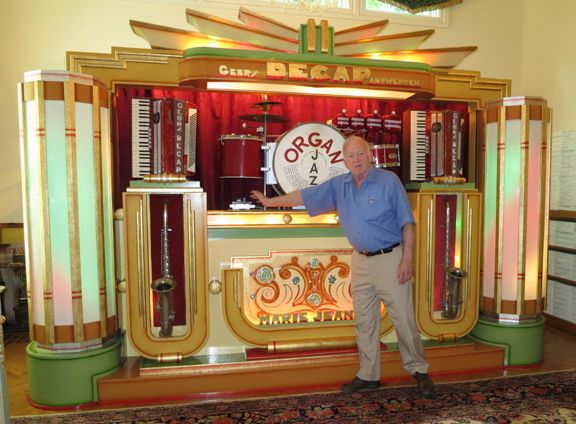 The DeCap is a later design which includes lights and an electric motor; it was used in a dance hall. The accordions and percussion instruments in the center are played by the machine; the saxophones are simulated by pipes behind their facade, along with other organ pipes. Very nice sound is produced this machine.
The DeCap is a later design which includes lights and an electric motor; it was used in a dance hall. The accordions and percussion instruments in the center are played by the machine; the saxophones are simulated by pipes behind their facade, along with other organ pipes. Very nice sound is produced this machine.
Bill hosted another meeting on November 9, 2014 meeting; the picture below shows the CTHSM Group listening to music from the Nickelodeon.
Home shop machining is often a solitary hobby, as are most hobbies now according to "Bowling Alone". The CTHSM group is an attempt to get
area HSM's to know one another and thus make our hobby a little less solitary.
This page was last modified .
If you have a comment on my site or its
contents, click here scroll down and
click again.